Navigating the Ocean Waste Crisis - What Can We Do?
The ocean is not just a vast body of water; it’s a lifeline for our planet. Unfortunately, it’s also becoming a dumping ground for waste, primarily plastics. This crisis is not just a distant problem—it’s knocking on our doors, affecting marine life, ecosystems, and even our health. So, what can we do about it? Well, it starts with understanding the issue and taking actionable steps to combat it. The ocean waste crisis is a call to arms for all of us. It’s a challenge that requires not just awareness but also **collective action**. But don’t worry, we’re in this together, and every small step counts!
Ocean waste encompasses a myriad of materials, with plastics being the most notorious. From **single-use bags** to **fishing nets**, these items find their way into our oceans, harming marine life and disrupting ecosystems. To tackle this crisis effectively, we need to understand the sources and types of ocean waste. Did you know that about **8 million tons** of plastic enter the oceans every year? That's equivalent to dumping a garbage truck full of plastic into the ocean every minute! Understanding this staggering statistic can motivate us to take action.
Marine life is at a breaking point due to ocean waste. Imagine a beautiful, vibrant coral reef, teeming with life. Now, picture that same reef choked with plastic debris and toxic waste. The contrast is shocking, isn’t it? Pollution disrupts ecosystems and threatens the survival of countless species. Fish, birds, and marine mammals are all affected, leading to a domino effect that can have dire consequences for biodiversity.
Microplastics, those tiny plastic particles less than five millimeters in size, are a silent killer in our oceans. They infiltrate the food chain, consumed by small marine organisms and working their way up to larger species, including humans. This is where it gets alarming. When we eat seafood, we might be ingesting these harmful particles, along with the toxins they carry. It’s a vicious cycle that puts both marine health and human health at risk.
Bioaccumulation is a process where toxins build up in an organism over time. For fish, this means that as they consume microplastics and other contaminated organisms, the toxins accumulate in their bodies. This not only affects the fish but also poses serious implications for human health when we consume contaminated seafood. It’s like playing a game of Russian roulette with our meals—one that we can’t afford to ignore.
Coral reefs are the rainforests of the sea, providing habitat for a quarter of all marine species. However, they are incredibly vulnerable to ocean waste. Pollution can lead to coral bleaching, making reefs more susceptible to disease and death. The loss of these vital ecosystems means the loss of biodiversity and the livelihoods of communities that depend on them. It’s a **tragic irony** that the beauty of the ocean is being marred by human negligence.
The consequences of ocean waste don’t stop at marine life; they ripple out to affect human health too. Communities that rely on fishing for their livelihoods are often the first to feel the impact of polluted waters. The fish they catch can be contaminated, leading to health issues ranging from gastrointestinal problems to long-term diseases. It’s a sobering reminder that our actions have consequences, and we must take responsibility.
Grassroots movements and community initiatives are vital in the fight against ocean waste. Across the globe, people are coming together to tackle this crisis head-on. From beach clean-ups to educational campaigns, community action can inspire collective efforts to reduce pollution. For instance, local organizations often organize events where volunteers come together to clean up beaches, making a tangible difference in their immediate environment.
Beach clean-ups are not just about picking up trash; they’re about raising awareness and fostering a sense of community. These events can be organized by schools, local businesses, or environmental groups, and they often attract a diverse group of participants. The impact is significant, not only in removing waste but also in educating participants about the importance of keeping our oceans clean.
Education is a powerful tool in the fight against ocean waste. Campaigns aimed at informing the public about the consequences of pollution can lead to lasting change. Schools can incorporate lessons about ocean conservation, while local governments can promote sustainable practices. The more we know, the more empowered we become to make choices that protect our oceans.
While community efforts are crucial, individual actions also play a significant role in reducing ocean waste. Each one of us can make conscious choices that contribute to a healthier planet. It’s about adopting sustainable habits and making informed decisions every day. The question is, are you ready to take action?
Minimizing plastic consumption is essential in tackling ocean waste. Simple changes, like using reusable bags, bottles, and containers, can significantly reduce the amount of plastic that ends up in our oceans. Think of it this way: every time you choose a reusable option, you’re casting a vote for a cleaner ocean.
Choosing to support brands that prioritize sustainability can create a ripple effect in the marketplace. When consumers demand environmentally friendly products, companies are more likely to adopt sustainable practices. It’s not just about buying; it’s about making choices that align with your values. Your dollar is your voice—make it count!
- What is ocean waste? Ocean waste refers to various materials, primarily plastics, that pollute marine environments.
- How does ocean waste affect marine life? Ocean waste disrupts ecosystems, threatens species survival, and leads to bioaccumulation of toxins in marine organisms.
- What can individuals do to help? Individuals can reduce plastic use, support sustainable brands, and participate in community clean-up efforts.
- Why are coral reefs important? Coral reefs support a vast array of marine life and are crucial for maintaining biodiversity.
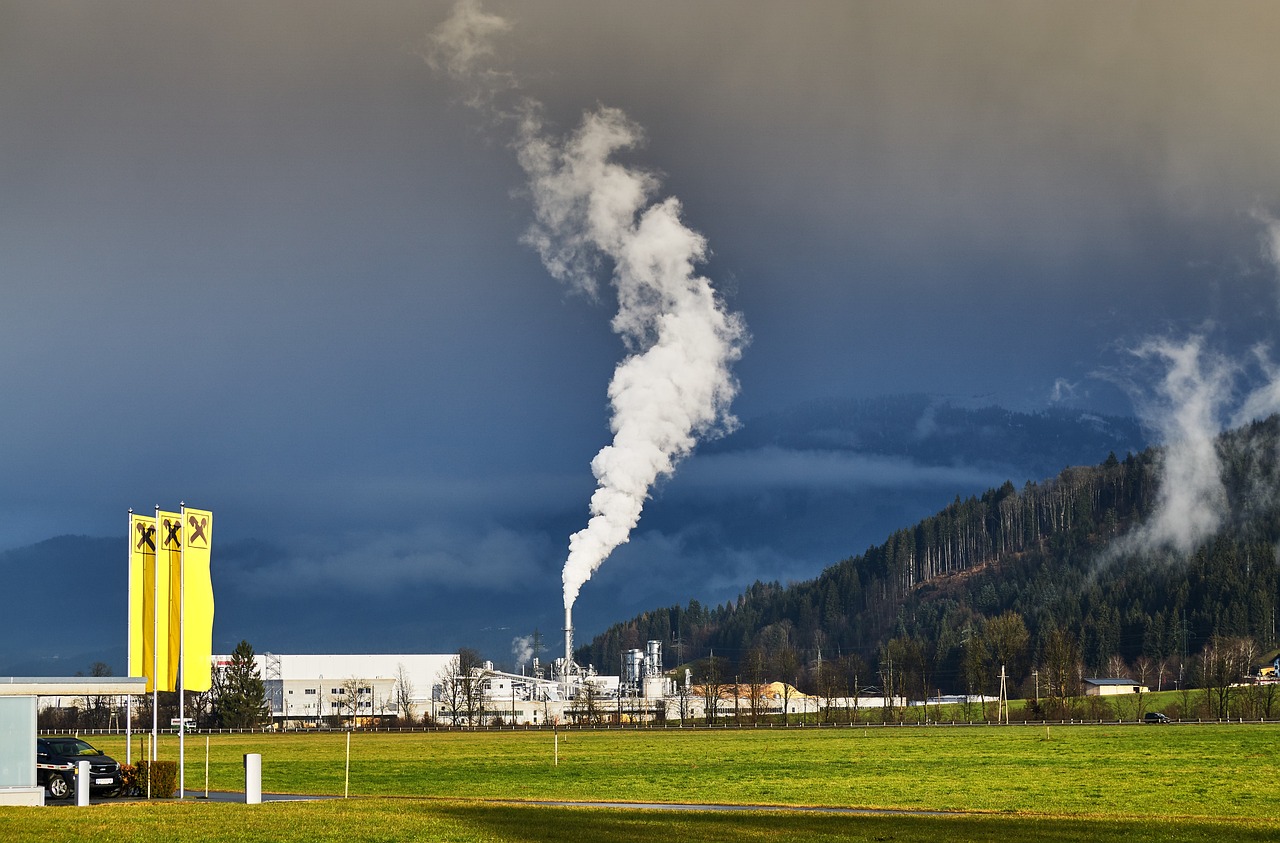
Understanding Ocean Waste
Ocean waste is a pressing environmental issue that has garnered significant attention in recent years. It primarily consists of various materials, with plastics being the most prominent. These materials not only pollute our beautiful oceans but also threaten the delicate balance of marine ecosystems. Understanding the sources and types of ocean waste is crucial for effectively addressing this crisis and fostering greater awareness about its dire consequences.
So, what exactly constitutes ocean waste? It includes a wide range of items, such as:
- Plastic Bottles - These are among the most common forms of waste found on beaches and in the ocean.
- Food Packaging - Items like wrappers and containers often end up in marine environments.
- Fishing Gear - Abandoned nets and lines can entangle marine life, causing severe injuries or death.
- Microplastics - Tiny plastic particles that result from the breakdown of larger plastic items.
These materials often originate from land-based sources, such as urban areas where waste management systems may be inadequate. Rainwater can wash debris into rivers and streams, eventually leading to the ocean. Additionally, coastal activities, including tourism and fishing, contribute significantly to the accumulation of waste in marine environments. It's alarming to think that an estimated 8 million metric tons of plastic waste enter our oceans every year, a figure that highlights the urgency of the situation.
Moreover, the types of waste found in the ocean can vary widely, but they all share a common thread: they disrupt marine life and ecosystems. For instance, larger debris can physically harm animals, while microplastics can be ingested by marine organisms, leading to a cascade of negative effects throughout the food chain. This problem not only endangers marine species but also poses a threat to human health as we rely on these resources for food and recreation.
As we delve deeper into this issue, it's essential to recognize the role of individual and collective actions in combating ocean waste. By understanding the sources and implications of this pollution, we can take informed steps toward reducing our impact on the oceans. Whether it’s through grassroots movements, community initiatives, or personal lifestyle changes, every effort counts in the fight against ocean waste.
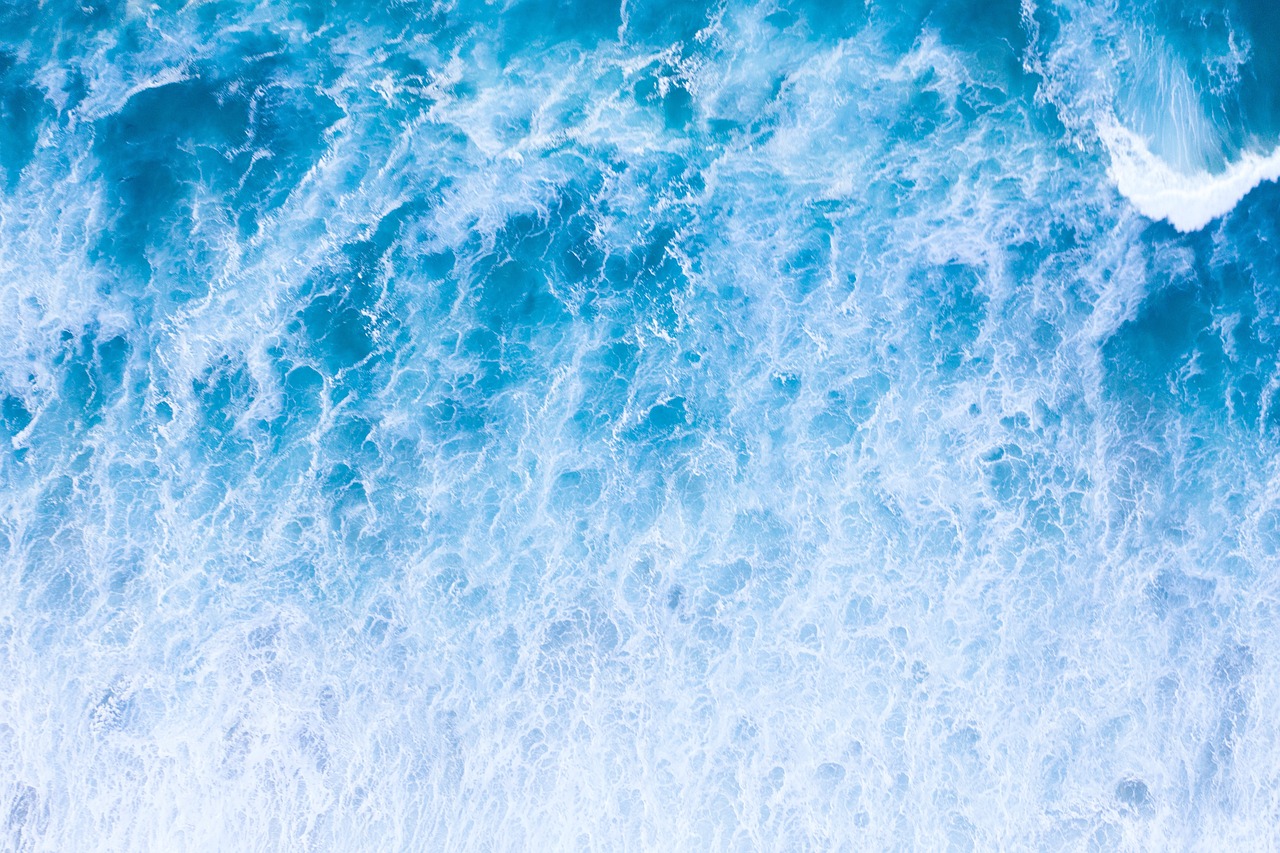
The Impact on Marine Life
The impact of ocean waste on marine life is nothing short of catastrophic. Imagine a vibrant underwater world, teeming with life, suddenly choked by a barrage of plastic and other pollutants. This scenario is becoming increasingly common as the oceans fill with debris, threatening the delicate balance of marine ecosystems. Marine creatures, from the smallest plankton to the largest whales, are affected by this pollution in ways that are both visible and insidious.
One of the most alarming consequences of ocean waste is the disruption of food chains. When larger animals ingest plastic or contaminated prey, the toxins accumulate in their bodies, leading to weakened health, reproductive issues, and even death. For instance, seabirds often mistake plastic for food, which can lead to starvation or internal injuries. According to recent studies, it is estimated that over 1 million seabirds and 100,000 marine mammals die each year due to plastic pollution. This statistic not only highlights the severity of the problem but also underscores the urgent need for action.
Furthermore, the introduction of harmful substances into the ocean creates a ripple effect throughout the food web. When fish consume microplastics, they inadvertently pass these toxins up the chain to larger predators, including humans. This phenomenon, known as bioaccumulation, raises significant concerns about seafood safety. The implications are dire: as we consume contaminated fish, we risk our own health, creating a dangerous cycle that perpetuates the problem.
Microplastics, tiny plastic particles less than 5mm in size, have emerged as one of the most pervasive pollutants in our oceans. These particles originate from various sources, including the breakdown of larger plastic debris and the shedding of synthetic fibers from clothing. Once in the ocean, microplastics can be ingested by a wide range of marine organisms, from tiny fish to filter-feeding species like oysters and clams.
Studies have shown that microplastics can cause physical harm to marine life, leading to digestive issues and reduced growth rates. Moreover, these particles can absorb harmful chemicals from the surrounding water, which can then be released into the tissues of marine organisms. This process not only compromises the health of marine species but also poses significant risks to humans who consume seafood. The cycle of pollution continues, affecting not just marine biodiversity but also the health of coastal communities.
Bioaccumulation is a term that describes how toxins build up in an organism over time. In the context of ocean waste, fish that consume microplastics and other contaminated prey can accumulate harmful substances in their bodies. This accumulation can lead to serious health issues for the fish themselves, including weakened immune systems and reproductive failures. As these fish are caught and consumed by humans, the toxins can enter our food supply, posing significant health risks.
To illustrate the severity of this issue, consider the following table that summarizes the potential health risks associated with consuming contaminated seafood:
| Contaminant | Health Risks |
|---|---|
| Heavy Metals (e.g., mercury) | Neurological damage, developmental issues in children |
| PCBs (Polychlorinated Biphenyls) | Immune system suppression, cancer |
| Microplastics | Potential endocrine disruption, gastrointestinal issues |
Coral reefs are often referred to as the "rainforests of the sea" due to their incredible biodiversity. However, these vital ecosystems are under siege from ocean waste. Pollution can lead to coral bleaching, a phenomenon where corals expel the algae living in their tissues, resulting in a loss of color and, ultimately, a decline in health. This not only affects the corals but also the myriad of marine species that depend on reefs for habitat and food.
As we continue to witness the degradation of coral reefs, we must recognize that their health is intricately linked to the overall wellbeing of marine life. Protecting these ecosystems is essential for maintaining biodiversity and ensuring the survival of countless species. The time to act is now—before it's too late.
- What are the main sources of ocean waste? Ocean waste primarily comes from land-based activities, including improper waste disposal, littering, and runoff from urban areas. Additionally, fishing gear and maritime activities contribute significantly to ocean pollution.
- How does ocean waste affect human health? Ocean waste can lead to the contamination of seafood, which poses health risks such as exposure to harmful chemicals and toxins. Consuming contaminated fish can result in serious health issues for humans.
- What can individuals do to help reduce ocean waste? Individuals can reduce ocean waste by minimizing plastic use, participating in clean-up efforts, and supporting sustainable brands. Every small action contributes to a larger impact.
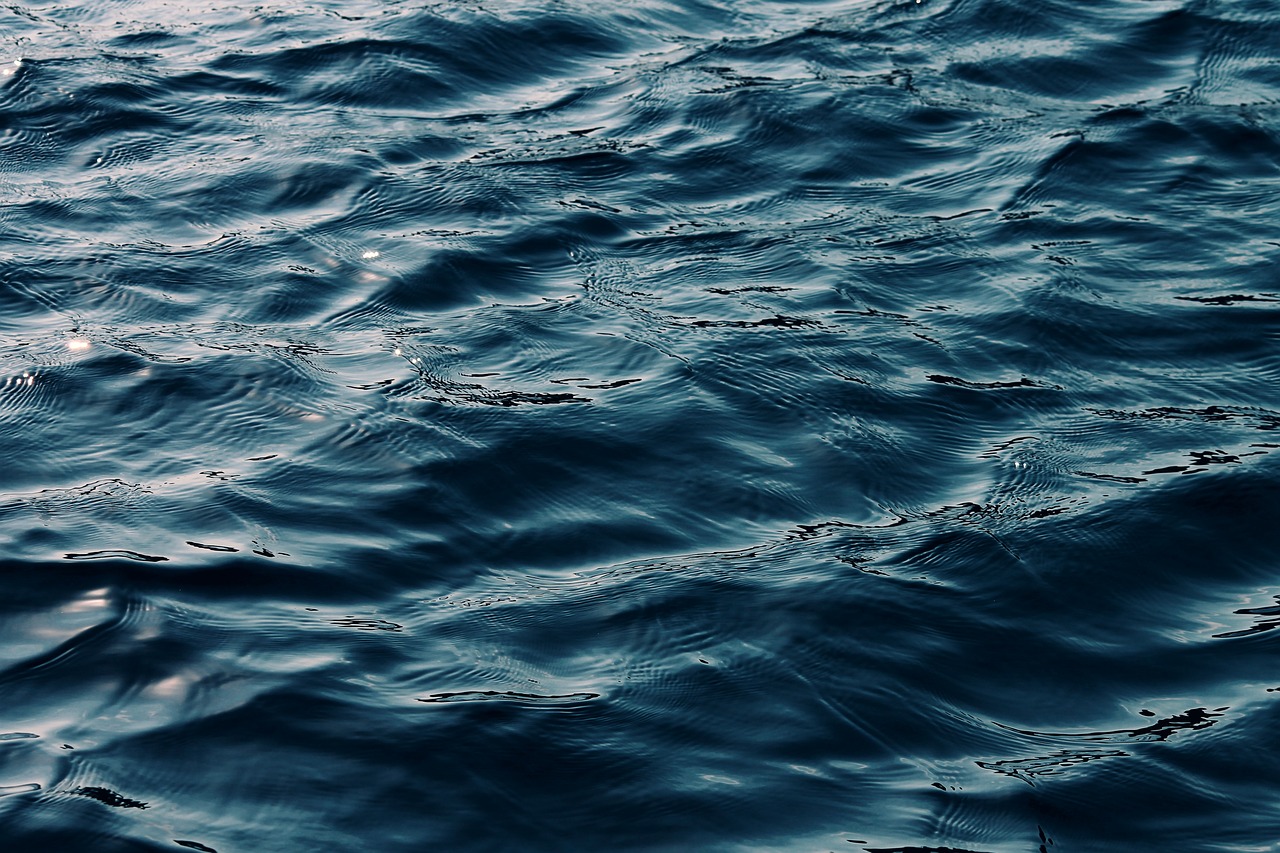
Microplastics and Their Effects
Microplastics, those minuscule plastic particles measuring less than 5mm, have become a pervasive threat to marine ecosystems. They originate from various sources, including the breakdown of larger plastic debris, synthetic fibers from clothing, and even microbeads found in personal care products. You might be wondering, how do these tiny particles wreak such havoc in our oceans? Well, it's all about their ability to infiltrate the food chain, posing serious risks to marine life and, ultimately, human health.
Once microplastics enter the ocean, they are often mistaken for food by marine organisms, ranging from tiny zooplankton to larger fish species. This ingestion can lead to a host of problems, including physical harm, reduced feeding efficiency, and even death. Moreover, microplastics can absorb toxic chemicals from the surrounding water, which, when ingested, can lead to bioaccumulation of harmful substances within the organisms. This creates a vicious cycle where not only marine life suffers, but the toxins can also make their way up the food chain, ultimately affecting humans who consume seafood.
Research has shown that microplastics can impact marine organisms in several ways:
- Physical Blockage: Ingested microplastics can block digestive tracts, leading to starvation.
- Toxicity: Chemicals absorbed by microplastics can disrupt endocrine systems in marine animals.
- Behavioral Changes: Some studies suggest that microplastics can alter the behavior of fish, affecting their ability to evade predators.
As we dive deeper into the implications of microplastics, it's essential to understand their long-term effects not just on marine life, but also on human health. The consumption of contaminated seafood can lead to various health issues, including hormonal disruptions and increased risk of chronic diseases. The reality is that our oceans, once teeming with life, are now becoming a cocktail of toxic substances, and microplastics are at the forefront of this alarming trend.
In summary, microplastics are more than just a nuisance; they represent a significant threat to marine ecosystems and human health. Addressing this crisis requires collective action, from reducing plastic use to advocating for stricter regulations on plastic production. By understanding the effects of microplastics, we can better equip ourselves to combat this pressing issue and protect our oceans for future generations.
- What are microplastics? Microplastics are tiny plastic particles less than 5mm in size that originate from larger plastic debris and other sources.
- How do microplastics affect marine life? They can be ingested by marine organisms, leading to physical harm, toxicity, and behavioral changes.
- Can microplastics impact human health? Yes, consuming seafood contaminated with microplastics can lead to health issues, including hormonal disruptions.
- What can individuals do to reduce microplastics in the ocean? Reducing plastic use, supporting sustainable brands, and participating in clean-up initiatives can help minimize microplastic pollution.

Bioaccumulation in Fish
Bioaccumulation is a term that describes the process by which toxic substances, such as heavy metals and microplastics, accumulate in the tissues of living organisms over time. This phenomenon is particularly concerning in fish, as they are often at the top of the aquatic food chain. When fish consume smaller organisms that have ingested these toxins, the harmful substances build up in their bodies, leading to increasingly high concentrations. This not only jeopardizes the health of the fish but also poses serious risks to humans who consume them.
To grasp the gravity of bioaccumulation, consider this: a small fish might ingest microplastics or toxic chemicals present in its environment. As larger fish eat these smaller fish, the toxins continue to concentrate, creating a chain reaction that amplifies the problem. This process is akin to stacking blocks; as you add more blocks on top of each other, the weight increases, making the structure more unstable. In the context of our oceans, this instability can lead to dire consequences for marine ecosystems and human health alike.
Research has shown that fish species such as tuna, swordfish, and mackerel often have elevated levels of mercury and other toxins due to bioaccumulation. These contaminants can lead to various health issues, including neurological damage and reproductive problems in both fish and humans. The following table illustrates the average levels of mercury found in different fish species:
| Fish Species | Average Mercury Level (ppm) |
|---|---|
| Tuna | 0.358 |
| Swordfish | 0.995 |
| Mackerel | 0.080 |
| Salmon | 0.022 |
As consumers, it is crucial for us to be aware of these risks and make informed choices about the seafood we consume. By understanding the implications of bioaccumulation, we can take steps to protect not only our health but also the health of our oceans. Sustainable fishing practices and choosing fish that are lower on the food chain can help mitigate these risks. Remember, every choice we make sends ripples through the ecosystem, much like a stone thrown into a pond creating waves that spread far and wide.
- What is bioaccumulation? Bioaccumulation refers to the accumulation of toxic substances in the tissues of living organisms over time.
- How does bioaccumulation affect human health? Consuming fish that have accumulated toxins can lead to serious health issues, including neurological damage and reproductive problems.
- Which fish are most affected by bioaccumulation? Fish species such as tuna, swordfish, and mackerel often have higher levels of mercury and other toxins due to bioaccumulation.
- What can I do to reduce my exposure to toxins in fish? Choose fish that are lower on the food chain, support sustainable fishing practices, and stay informed about seafood safety guidelines.
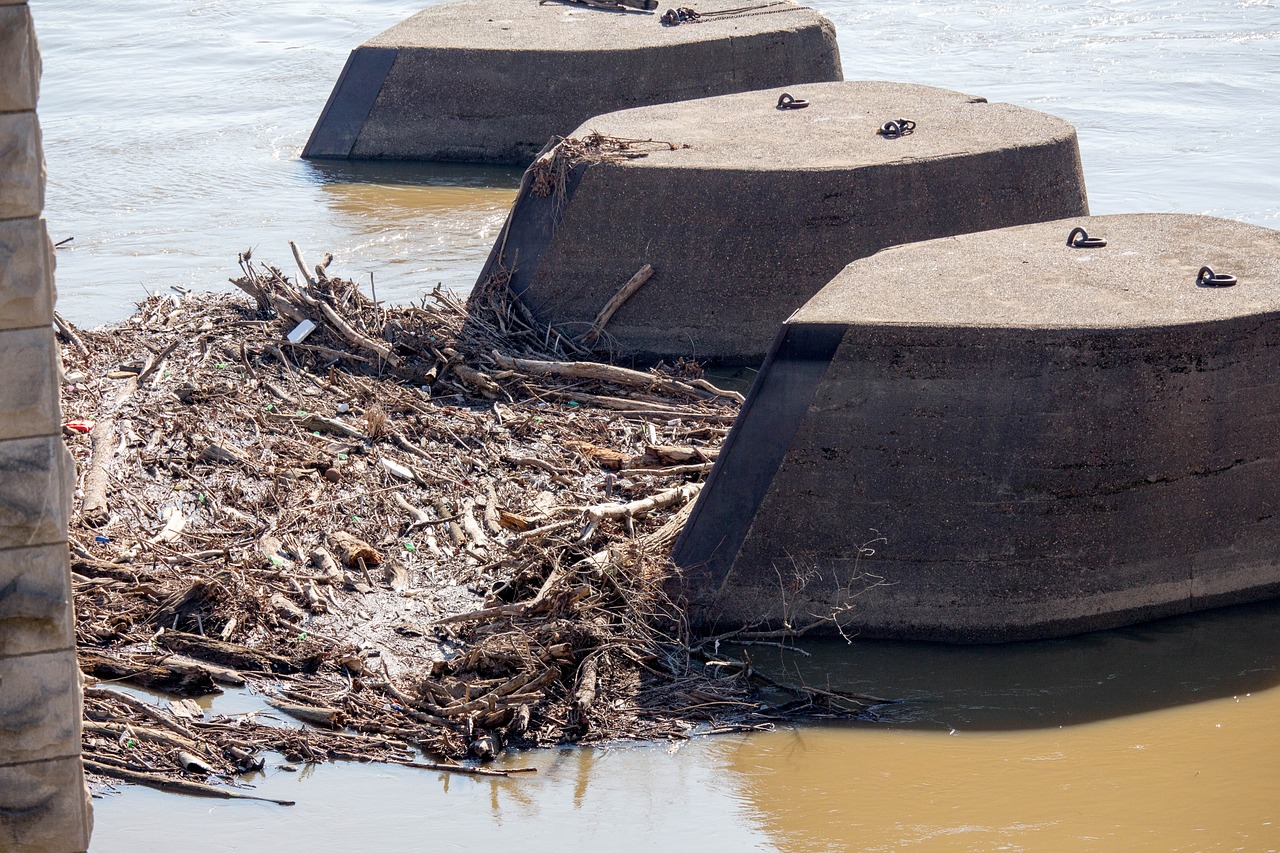
Threats to Coral Reefs
Coral reefs, often referred to as the "rainforests of the sea," are not just beautiful underwater structures; they are essential ecosystems that support a vast array of marine life. However, these vibrant habitats are facing numerous threats, primarily due to ocean waste. Plastic pollution is one of the most significant dangers, as it can smother coral reefs, block sunlight, and disrupt the delicate balance of marine ecosystems. When plastic debris breaks down into microplastics, it can be ingested by marine organisms, leading to a ripple effect throughout the food chain.
Moreover, chemical pollutants from agricultural runoff and industrial waste can lead to coral bleaching, a phenomenon where corals expel the algae living in their tissues, resulting in a loss of color and vital nutrients. This process not only weakens the coral but also makes them more susceptible to diseases. The consequences of coral bleaching are dire, as it can lead to the death of entire coral colonies, drastically reducing biodiversity in these regions.
Another critical threat comes from climate change, which exacerbates the problem. Rising ocean temperatures contribute to coral bleaching, while increased carbon dioxide levels lead to ocean acidification. This change in pH levels affects the ability of corals to build their calcium carbonate skeletons, making it harder for them to grow and thrive. The combination of these factors creates a perfect storm for coral reefs, pushing them closer to the brink of collapse.
In addition to these environmental factors, human activities such as overfishing and coastal development further stress coral reef ecosystems. Overfishing disrupts the natural balance of marine life, while coastal development often leads to habitat destruction. The removal of mangroves and seagrasses, which serve as natural barriers against storm surges and erosion, only compounds the issue.
To truly understand the impact of these threats, consider the following table that summarizes the primary dangers to coral reefs:
| Threat | Description | Impact on Coral Reefs |
|---|---|---|
| Plastic Pollution | Debris that smothers corals and introduces toxins | Disruption of growth and health of coral colonies |
| Chemical Pollutants | Runoff from agriculture and industry | Coral bleaching and increased susceptibility to disease |
| Climate Change | Rising temperatures and ocean acidification | Reduced coral growth and increased mortality rates |
| Overfishing | Depletion of fish populations that maintain ecosystem balance | Imbalance in marine life, affecting coral health |
| Coastal Development | Destruction of habitats and natural barriers | Increased erosion and vulnerability of coral reefs |
In conclusion, the survival of coral reefs hinges on our collective action. By understanding the threats they face, we can take steps to mitigate these dangers. Whether it's reducing plastic use, advocating for sustainable fishing practices, or supporting policies that protect marine environments, every effort counts. After all, the health of our oceans is intertwined with the health of our planet, and protecting coral reefs is a crucial part of that equation.
- What are coral reefs?
Coral reefs are underwater structures made from calcium carbonate secreted by corals, providing habitat for numerous marine species. - Why are coral reefs important?
They support biodiversity, protect coastlines from erosion, and contribute to the economy through tourism and fisheries. - How does plastic pollution affect coral reefs?
Plastic can smother corals and introduce harmful toxins, leading to coral bleaching and death. - What can individuals do to help protect coral reefs?
Reduce plastic use, support sustainable seafood, and participate in local conservation efforts.
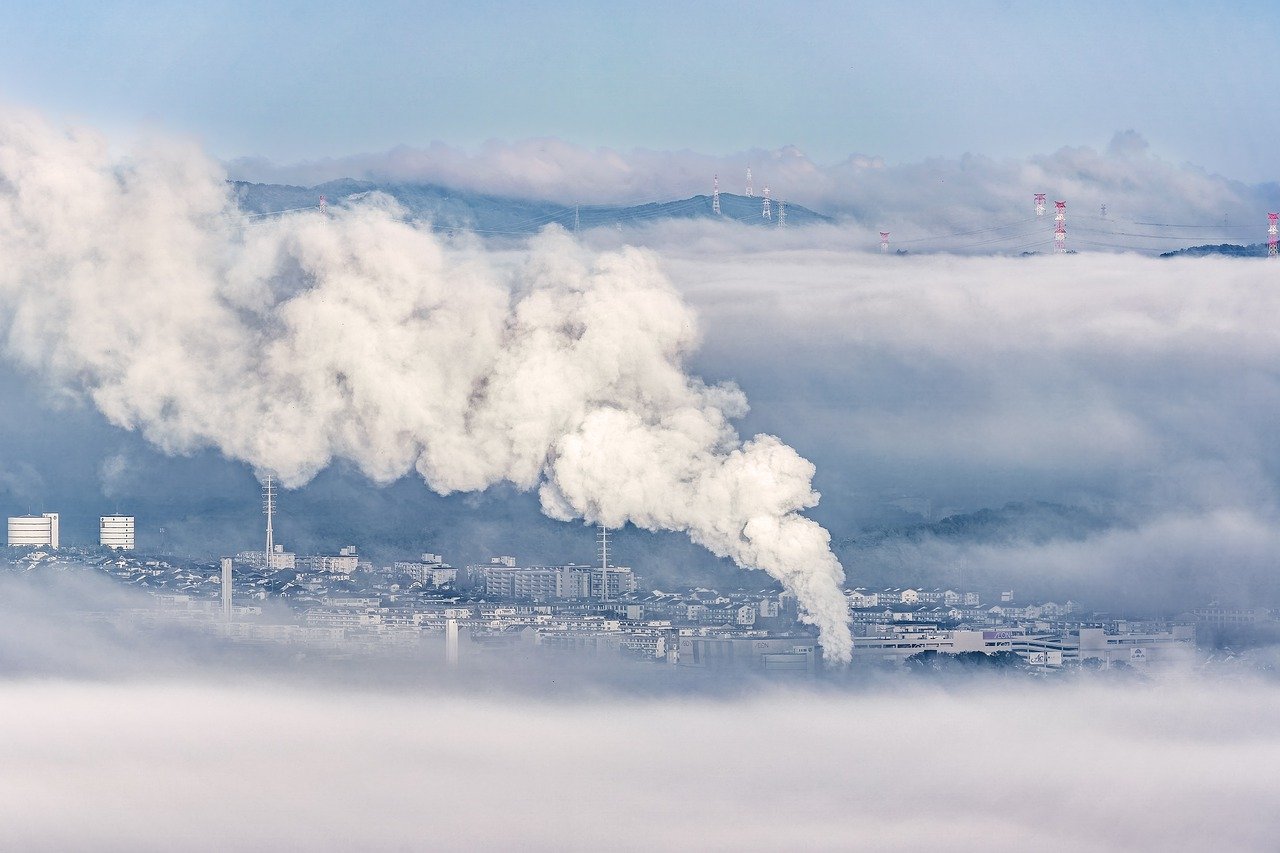
Effects on Human Health
The consequences of ocean waste extend far beyond the waves and the creatures that inhabit them; they ripple through our lives in ways we often overlook. As we indulge in our favorite seafood or enjoy a day at the beach, we might not realize that the very waters we cherish are laden with pollutants that can compromise our health. The connection between ocean pollution and public health is a pressing concern that demands our attention.
One of the most alarming aspects of ocean waste is its impact on the seafood we consume. Fish and other marine organisms are not just victims of pollution; they are carriers of toxins that accumulate in their bodies over time. This process, known as bioaccumulation, means that when we eat contaminated fish, we inadvertently introduce harmful substances into our own bodies. Studies have shown that consuming seafood high in toxins can lead to a range of health issues, including:
- Neurological Disorders: Heavy metals like mercury can affect brain function, leading to cognitive impairments and developmental issues, particularly in children.
- Hormonal Imbalances: Chemicals like PCBs (polychlorinated biphenyls) can disrupt endocrine systems, potentially resulting in reproductive issues and increased cancer risks.
- Immune System Suppression: Exposure to certain pollutants can weaken our immune responses, making us more susceptible to infections and diseases.
Moreover, the presence of microplastics in our oceans poses an additional threat to human health. These tiny plastic particles have been found in everything from bottled water to table salt, infiltrating our food chain in ways that are still being studied. As researchers delve deeper into the effects of microplastics, early findings suggest that they may lead to inflammation and other health issues when ingested.
It’s not just the seafood eaters who are at risk; communities living near polluted coastlines face unique challenges. These areas often experience higher rates of respiratory issues due to airborne pollutants and toxic algal blooms, which can release harmful toxins into the air. Furthermore, recreational activities such as swimming and surfing in contaminated waters can lead to skin infections and gastrointestinal illnesses. The health risks are not just theoretical; they are real and pressing.
As we navigate this complex web of health implications, it becomes clear that addressing ocean waste is not just an environmental issue; it is a public health imperative. By reducing pollution and advocating for cleaner oceans, we are not only protecting marine life but also safeguarding our own health and that of future generations. It’s a call to action that we can’t afford to ignore.
- What are the main sources of ocean waste? Ocean waste primarily comes from plastic products, industrial runoff, and waste management practices that fail to contain materials.
- How do microplastics affect human health? Microplastics can enter the food chain and may lead to inflammation and other health issues when ingested.
- What can I do to reduce ocean waste? You can minimize plastic use, participate in beach clean-ups, and support sustainable brands.
- Are there any health risks from swimming in polluted waters? Yes, swimming in contaminated waters can lead to skin infections and gastrointestinal illnesses.
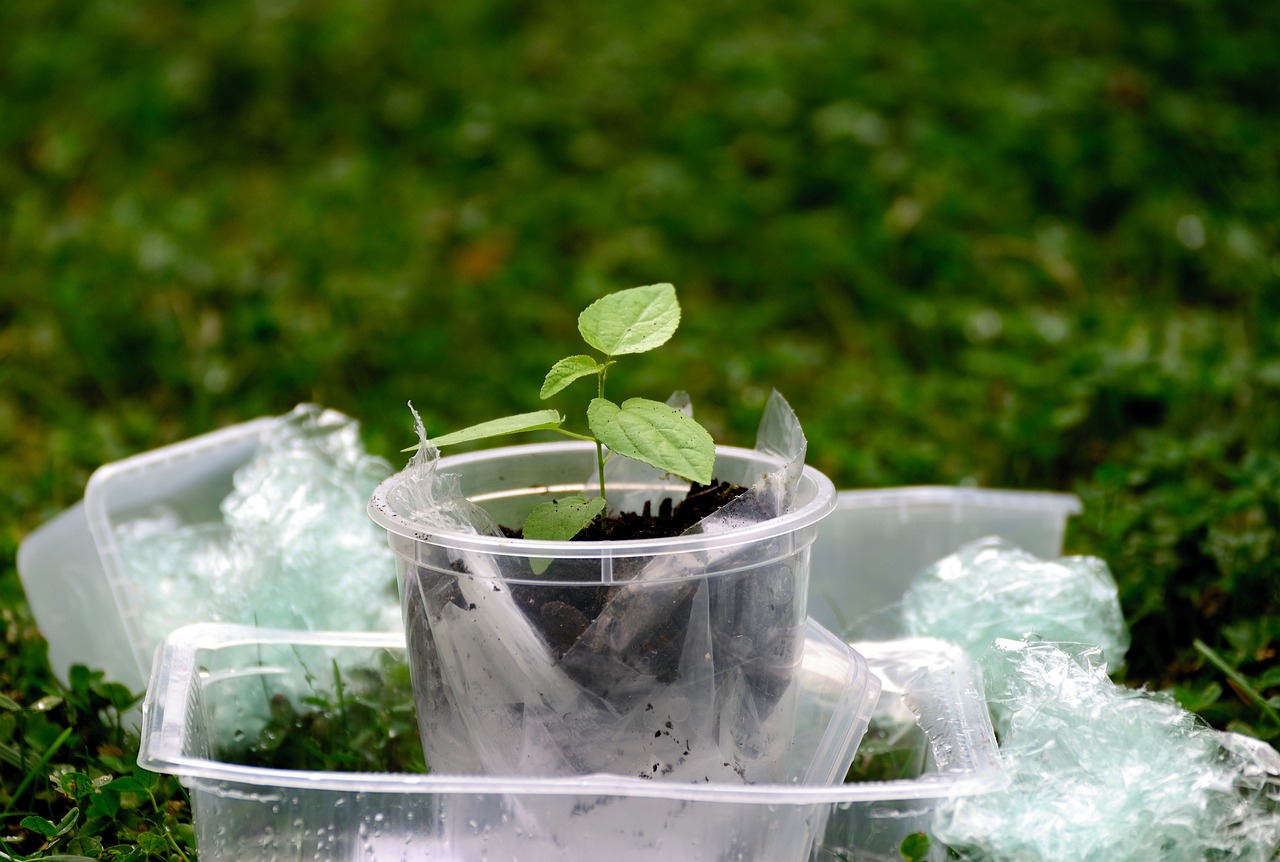
Community Initiatives to Combat Waste
As the ocean waste crisis escalates, communities around the globe are stepping up to tackle this pressing issue. Grassroots movements and local initiatives are not just buzzwords; they are the heartbeat of change that can significantly impact our environment. Imagine a world where communities unite, rolling up their sleeves to restore the beauty of our beaches and oceans. This is not just a dream; it’s happening right now, and you can be a part of it!
One of the most effective ways to combat ocean waste is through beach clean-up programs. These events are often organized by local community groups, schools, and environmental organizations. Volunteers come together to remove trash from beaches, which not only helps to improve the aesthetics of these natural spaces but also plays a crucial role in protecting marine life. For instance, a recent clean-up event in California resulted in the removal of over 2,000 pounds of trash in just one day! This is a testament to the power of community effort and the difference it can make.
Moreover, these clean-up initiatives foster a sense of community and responsibility among participants. When individuals see the direct impact of their efforts, it ignites a passion for environmental stewardship. Many participants report feeling more connected to their local ecosystems and are motivated to continue their efforts beyond just one clean-up event. It becomes a ripple effect, encouraging others to join the cause and spread awareness about the importance of keeping our oceans clean.
In addition to clean-ups, educational campaigns play a vital role in raising awareness about ocean waste. These campaigns often include workshops, seminars, and social media initiatives aimed at informing the public about the sources and consequences of ocean pollution. For example, community leaders might host informational sessions that discuss the impact of plastic waste on marine life, showcasing statistics and real-life stories to drive the message home. Education empowers individuals with knowledge, allowing them to make informed decisions about their consumption habits and waste management practices.
Many communities also collaborate with local schools to incorporate environmental education into their curricula. This means children learn about sustainability and the importance of reducing waste from a young age. Such initiatives not only foster a sense of responsibility but also inspire the next generation to be proactive in protecting our oceans. After all, they are the stewards of the future!
To further illustrate the impact of community initiatives, let’s take a look at a few successful programs around the world:
| Program Name | Location | Impact |
|---|---|---|
| Ocean Conservancy's International Coastal Cleanup | Global | Millions of pounds of trash removed annually |
| Surfrider Foundation's Beach Cleanup | USA | Community engagement and awareness raised |
| Clean Up Australia Day | Australia | Over 16 million pieces of rubbish collected |
These programs are just a glimpse of what communities can achieve when they come together with a common goal. The beauty of community initiatives lies in their ability to inspire collective action and create lasting change. Whether it’s through organized clean-ups or educational campaigns, every effort counts. So, why not get involved? Join a local initiative, start your own, or simply spread the word about the importance of reducing ocean waste. Remember, every small action can lead to significant change!
Q: How can I find a beach clean-up event near me?
A: You can search online for local environmental organizations or community groups that organize beach clean-ups. Social media platforms are also a great resource for finding events in your area.
Q: What should I bring to a beach clean-up?
A: Typically, you should bring gloves, trash bags, water, sunscreen, and comfortable clothing. Some events provide supplies, but it's always good to check beforehand.
Q: How can I start my own community initiative?
A: Starting your own initiative can be as simple as gathering a group of friends and planning a clean-up day. You can also reach out to local organizations for support and resources.
Q: Why is education important in combating ocean waste?
A: Education raises awareness about the impact of ocean waste and empowers individuals to make informed choices that contribute to environmental sustainability.

Beach Clean-Up Programs
Beach clean-up programs are not just about picking up trash; they are a powerful movement that brings communities together to tackle the pressing issue of ocean waste. Imagine a sunny Saturday morning, with the sound of waves crashing and the smell of salt in the air. Groups of enthusiastic volunteers gather, armed with gloves, bags, and a common goal: to restore the beauty of their local beaches. These events not only help to clear away litter but also foster a sense of community and environmental stewardship.
One of the most remarkable aspects of beach clean-up programs is their ability to unite people from all walks of life. Whether you're a local resident, a tourist, or a student looking to earn community service hours, everyone can contribute. By participating, individuals become part of a larger narrative—one that emphasizes the importance of protecting our oceans and the life they harbor. The impact of these clean-ups can be seen immediately: a cleaner beach, happier wildlife, and a more beautiful environment for everyone to enjoy.
But the benefits extend beyond the immediate cleanup. These programs often serve as educational platforms, raising awareness about the sources of ocean waste and its detrimental effects on marine ecosystems. Participants learn about the types of waste commonly found on beaches, which can include everything from plastic bottles and food wrappers to fishing gear and cigarette butts. This knowledge is crucial in understanding how our daily habits contribute to the problem and how we can make more sustainable choices.
Many organizations have taken the initiative to organize regular beach clean-ups, often collaborating with local governments and environmental groups. For example, the Ocean Conservancy hosts an annual International Coastal Cleanup event, where thousands of volunteers around the world come together to collect trash from their local shorelines. This global effort highlights the collective power of individuals making small changes that lead to significant environmental benefits.
In addition to organized events, social media plays a vital role in promoting beach clean-ups. Hashtags like #BeachCleanup help spread the word and encourage participation. People share their experiences, post before-and-after photos, and inspire others to join the cause. This digital engagement creates a ripple effect, motivating even more individuals to take action in their own communities.
For those interested in organizing their own beach clean-up, here are a few steps to consider:
- Choose a Location: Select a beach that needs attention, ensuring you have the necessary permissions if it's a public area.
- Gather Supplies: Collect trash bags, gloves, and any other tools needed for the clean-up.
- Promote the Event: Use social media, local bulletin boards, and community groups to spread the word.
- Incentivize Participation: Consider providing refreshments or small prizes to encourage more volunteers to join.
- Follow Up: After the event, share your success stories and the amount of waste collected to keep the momentum going.
Ultimately, beach clean-up programs are a testament to what can be achieved when communities come together for a common cause. They remind us that while the ocean waste crisis is daunting, collective action can lead to meaningful change. By participating in these events, we not only contribute to a cleaner environment but also inspire others to take responsibility for the health of our oceans. So, the next time you see a beach in need, consider rolling up your sleeves and joining a clean-up program. After all, every little bit helps!
Q: How often should beach clean-ups be organized?
A: Ideally, beach clean-ups should be organized regularly, such as monthly or quarterly, to maintain cleanliness and raise ongoing awareness about ocean waste.
Q: Can children participate in beach clean-ups?
A: Yes! Beach clean-ups are family-friendly activities, but it's important to supervise children and ensure they understand safety guidelines.
Q: What types of waste are typically collected during clean-ups?
A: Common items include plastic bottles, food wrappers, cigarette butts, and fishing gear. Each clean-up provides valuable data on the types of waste found.
Q: How can I get involved in a beach clean-up program?
A: You can join local environmental groups, check social media for events, or even organize your own clean-up with friends and family.
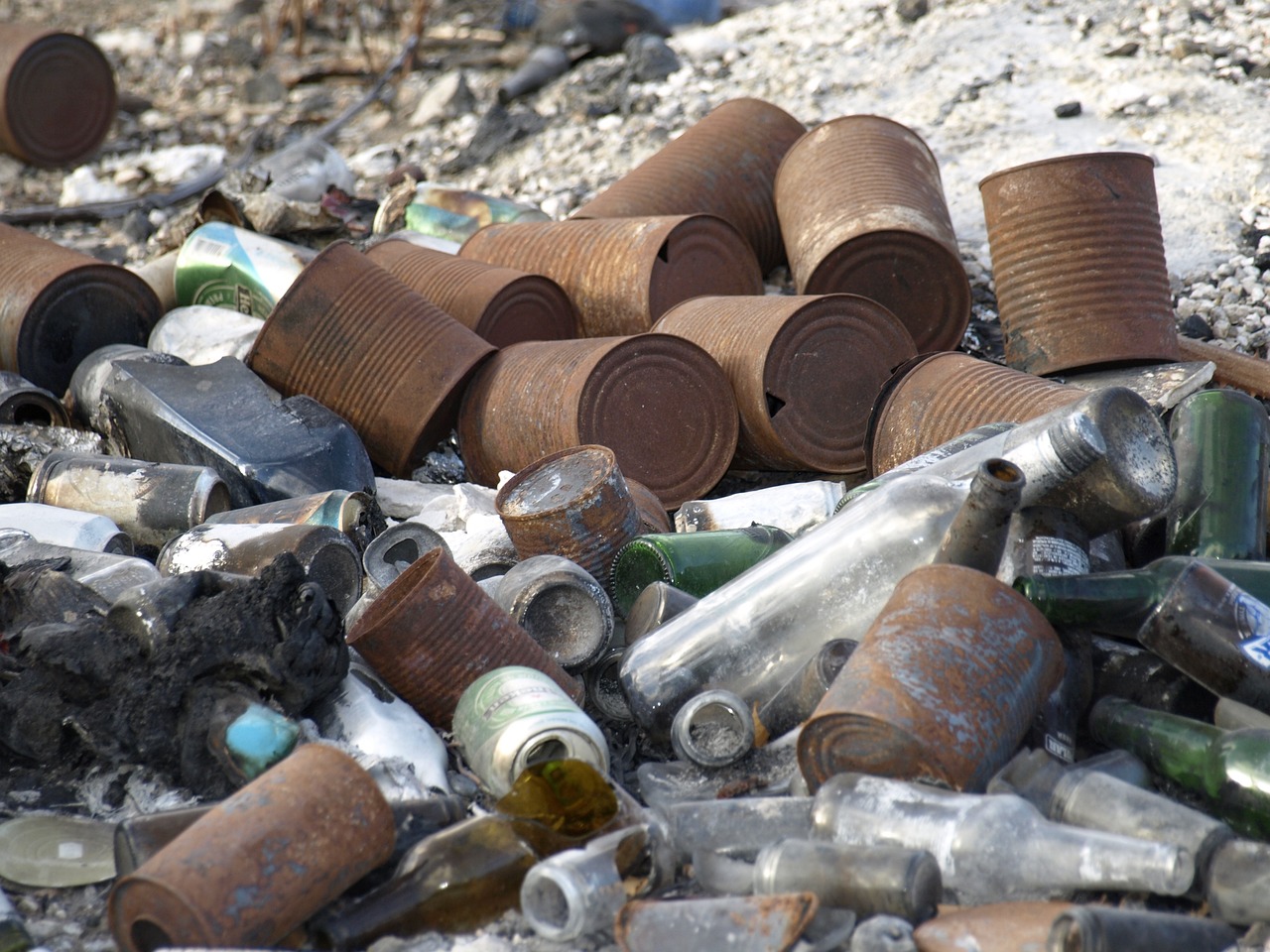
Educational Campaigns
Education is a powerful tool in the fight against ocean waste. By raising awareness and informing the public about the dire consequences of pollution, we can inspire individuals and communities to take meaningful action. Educational campaigns aim to enlighten people about the sources, effects, and solutions related to ocean waste, making the issue more relatable and urgent. These campaigns often employ various strategies to engage different audiences, from school children to local businesses.
One effective approach is to integrate ocean waste education into school curricula. This can involve interactive lessons, field trips to local beaches, and hands-on activities like creating art from recycled materials. By involving students in practical experiences, they learn to appreciate their environment and understand their role in protecting it. For instance, students can participate in projects that measure the amount of waste collected during beach clean-ups, thereby visually grasping the scale of the problem.
Moreover, community workshops and seminars can serve as platforms for adults to learn about sustainable practices. These events can cover topics such as:
- Reducing single-use plastics
- Understanding the impact of microplastics
- Implementing recycling programs
Such workshops can foster discussions about local challenges and solutions, creating a sense of community responsibility. Furthermore, social media campaigns can amplify these messages, reaching a broader audience. Engaging visuals and compelling stories shared online can motivate people to rethink their habits and make eco-friendly choices.
Partnerships with local businesses can also enhance educational efforts. For example, restaurants can host "Plastic-Free Days" where they encourage patrons to bring their own containers. In return, these establishments can offer discounts, creating an incentive for customers to participate. Such initiatives not only educate but also demonstrate that sustainable choices can be practical and beneficial.
Ultimately, educational campaigns are about creating a ripple effect. When individuals understand the impact of their actions, they are more likely to change their behavior and inspire those around them. With every workshop, social media post, and school lesson, we take a step closer to a cleaner ocean and a healthier planet.
Q: What are educational campaigns focused on ocean waste?
A: Educational campaigns aim to raise awareness about the impact of ocean waste and promote sustainable practices to reduce pollution. They often include workshops, school programs, and social media outreach.
Q: How can I get involved in local educational initiatives?
A: You can participate by attending community workshops, volunteering for beach clean-ups, or even organizing your own educational events to spread awareness in your neighborhood.
Q: Are there resources available for teachers to incorporate ocean waste education?
A: Yes, many organizations provide free resources, lesson plans, and activities that educators can use to teach students about ocean waste and environmental stewardship.

Individual Actions to Reduce Waste
When it comes to tackling the ocean waste crisis, every little action counts! You might be wondering, “What can I do?” The truth is, individual actions can lead to **significant changes**. By making conscious choices in our daily lives, we can collectively reduce the amount of waste that ends up in our oceans. Think of it like a ripple effect—your small efforts can inspire others and create a wave of positive change!
One of the most impactful steps we can take is to reduce our plastic use. Plastics are everywhere, from the bags we use at the grocery store to the packaging that surrounds our favorite snacks. By opting for reusable bags, bottles, and containers, we can significantly cut down on the amount of plastic that ends up in landfills and, ultimately, our oceans. For instance, consider carrying a reusable water bottle instead of buying bottled water. Not only does this help the environment, but it also saves you money in the long run!
Moreover, supporting sustainable brands is another powerful way to make a difference. When we choose to purchase from companies that prioritize eco-friendly practices, we send a clear message about the kind of world we want to live in. These brands often use sustainable materials, reduce waste in their production processes, and contribute to environmental initiatives. Next time you shop, take a moment to research the brands you’re supporting. You might be surprised by how much of an impact your choices can make!
To further illustrate the importance of our individual actions, consider the following table that highlights the impact of common plastic items:
| Plastic Item | Estimated Time to Decompose | Environmental Impact |
|---|---|---|
| Plastic Bag | 10-1,000 years | Can entangle marine animals and pollute waterways |
| Plastic Bottle | 450 years | Leaches harmful chemicals into the soil and water |
| Straw | 200 years | Often ends up in oceans, harming marine life |
These statistics are eye-opening, aren’t they? It’s a stark reminder that our everyday choices have far-reaching consequences. Additionally, consider adopting a zero-waste lifestyle. This doesn’t mean you have to be perfect—rather, it’s about making gradual changes towards reducing waste. Start small by composting your food scraps, recycling properly, and avoiding single-use items. Each step you take can lead to a more sustainable lifestyle.
Lastly, let’s not forget the importance of spreading awareness. Talk to your friends and family about ocean waste and the steps they can take to help. Organize community events or workshops to educate others about the impact of plastic pollution. The more people know, the more likely they are to take action!
Q: What are some easy ways to reduce plastic use?
A: Start by using reusable bags, bottles, and containers. Avoid single-use plastics like straws and cutlery, and opt for products with minimal packaging.
Q: How can I support sustainable brands?
A: Research brands that prioritize sustainability and eco-friendly practices. Look for certifications like Fair Trade or organic labels, and choose to buy from them.
Q: What is a zero-waste lifestyle?
A: A zero-waste lifestyle aims to reduce waste to as close to zero as possible by rethinking how we use and dispose of products. It involves practices like composting, recycling, and choosing reusable items.
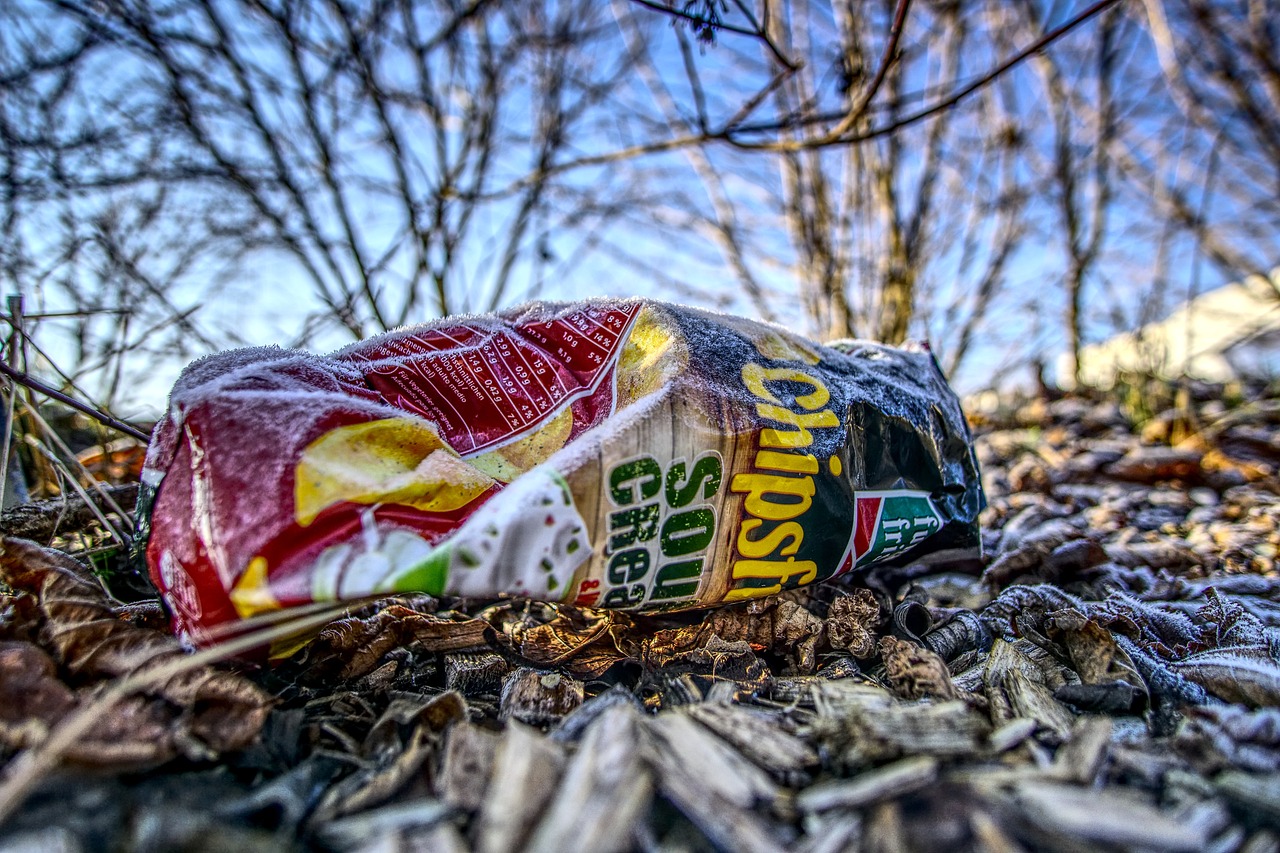
Reducing Plastic Use
Reducing plastic use is not just a trend; it’s a necessity for the health of our planet. Every day, we encounter countless plastic products that, while convenient, contribute significantly to ocean waste. Imagine walking into a grocery store and seeing aisles filled with plastic-wrapped goods. It’s overwhelming, isn’t it? But the good news is that we have the power to change our habits and make conscious choices that can lead to a healthier environment.
One of the first steps in reducing plastic use is to become aware of our consumption habits. Take a moment to reflect on the items you purchase regularly. Are they packaged in plastic? Do you often buy single-use items? By identifying these patterns, you can start to make informed decisions about what you bring into your home. For instance, consider switching from bottled water to a reusable water bottle. Not only does this cut down on plastic waste, but it also saves you money in the long run!
Additionally, embracing sustainable alternatives can make a significant impact. Here are a few easy swaps you can implement in your daily life:
- Use cloth bags instead of plastic bags for shopping.
- Choose glass or metal containers for food storage.
- Opt for products with minimal or no plastic packaging.
Moreover, supporting local businesses that prioritize sustainability can amplify your efforts. Many small companies are committed to reducing plastic waste by offering eco-friendly products. When you choose to shop at these places, you not only reduce your plastic footprint but also encourage a market shift towards more sustainable practices. It’s like casting a vote for the kind of world you want to live in!
Another effective strategy is to advocate for change in your community. Participate in local initiatives that aim to reduce plastic waste, such as community clean-ups or educational workshops. By joining forces with others, you amplify your voice and inspire those around you to rethink their plastic consumption. Remember, every little action counts, and together, we can create a wave of change.
In conclusion, reducing plastic use is a journey that requires commitment and creativity. It’s about making smarter choices, supporting sustainable brands, and inspiring others to follow suit. As we navigate this ocean waste crisis, let’s remember that our individual actions can lead to collective impact. So, are you ready to take the plunge and make a difference?
Q1: What are some easy ways to reduce plastic in my daily life?
A1: Start by carrying a reusable water bottle, using cloth bags for shopping, and avoiding single-use plastic items. Small changes can lead to significant reductions in plastic waste.
Q2: How can I encourage others to reduce plastic use?
A2: Share your personal journey towards reducing plastic, organize community events, and provide information on sustainable alternatives to inspire those around you.
Q3: Are there any apps or resources to help track plastic consumption?
A3: Yes, several apps can help you track your plastic usage and suggest alternatives. Look for sustainability-focused apps that align with your goals.

Supporting Sustainable Brands
In our quest to tackle the ocean waste crisis, one of the most impactful actions we can take is to support sustainable brands. These brands prioritize the environment and make conscious efforts to reduce their ecological footprint. By choosing to buy from companies that are committed to sustainability, we not only help reduce waste but also encourage other businesses to adopt greener practices. Think of it as voting with your wallet; every purchase sends a message that consumers care about the planet.
But what exactly makes a brand sustainable? Generally, sustainable brands focus on the following aspects:
- Eco-friendly Materials: They utilize materials that are biodegradable, recycled, or sourced sustainably. This reduces the amount of plastic and other harmful substances that end up in our oceans.
- Ethical Production: Sustainable brands ensure fair labor practices and prioritize the welfare of workers in their supply chains.
- Transparency: These companies are open about their processes and the impact of their products on the environment.
- Community Engagement: Many sustainable brands actively participate in community initiatives, such as beach clean-ups or educational campaigns, to further combat ocean waste.
When you choose to support these brands, you create a ripple effect. More consumers demanding sustainable products leads to increased competition among companies, driving more of them to adopt environmentally friendly practices. This shift can significantly reduce the amount of waste produced and, consequently, the pollution that finds its way into our oceans.
Moreover, many sustainable brands offer products that are not only better for the environment but also high-quality and innovative. For example, brands are now creating biodegradable packaging, reusable alternatives to single-use plastics, and even upcycled products made from ocean waste itself. By investing in these products, you're not just reducing your own plastic consumption; you're also supporting the development of new solutions to the ocean waste crisis.
In conclusion, supporting sustainable brands is a powerful way to contribute to the fight against ocean waste. It’s about making informed choices that align with our values. So next time you're shopping, take a moment to research the brands you’re considering. Look for those that are making a difference and remember that every small action counts. Together, we can create a wave of change that helps protect our precious oceans.
1. How can I identify sustainable brands?
Many sustainable brands will have certifications such as Fair Trade, USDA Organic, or B Corp. Additionally, look for transparency in their supply chain and materials used.
2. Do sustainable products cost more?
While some sustainable products may have a higher upfront cost, they often last longer and are made from higher-quality materials, making them more economical in the long run.
3. Can supporting sustainable brands really make a difference?
Absolutely! Supporting these brands encourages more companies to adopt sustainable practices, which can lead to significant reductions in waste and pollution.
4. What are some examples of sustainable brands?
There are many, including brands like Patagonia, Seventh Generation, and TOMS, which focus on sustainability and ethical production.
Frequently Asked Questions
- What is ocean waste and what are its main components?
Ocean waste primarily consists of various types of materials, with plastics being the most significant contributor. This includes everything from large debris like discarded fishing nets to tiny microplastics that result from the breakdown of larger plastic items. Understanding these components is crucial for developing effective strategies to combat ocean pollution.
- How does ocean waste affect marine life?
Ocean waste poses serious threats to marine life, disrupting ecosystems and endangering species. Animals can ingest or become entangled in plastic debris, leading to injury or death. Furthermore, pollutants can accumulate in the food chain, affecting not just marine organisms but also the humans who rely on them for food.
- What are microplastics and why are they a concern?
Microplastics are tiny plastic particles, often less than five millimeters in size, that result from the degradation of larger plastic items. They are concerning because they can easily enter the food chain, affecting marine organisms' health and potentially leading to bioaccumulation of toxins in fish, which can impact human health when consumed.
- What initiatives can communities undertake to combat ocean waste?
Communities can engage in various initiatives such as organizing beach clean-ups, implementing recycling programs, and launching educational campaigns to raise awareness about ocean waste. These grassroots movements not only help clean up local environments but also inspire collective action and foster a sense of responsibility towards marine conservation.
- How can individuals make a difference in reducing ocean waste?
Individuals can significantly reduce ocean waste by making conscious choices, such as minimizing plastic use, opting for reusable products, and supporting brands that prioritize sustainability. Simple actions like bringing your own bags to the store or choosing products with less packaging can collectively lead to substantial changes.
- What are some sustainable alternatives to single-use plastics?
There are many sustainable alternatives to single-use plastics, including reusable bags, stainless steel or glass water bottles, bamboo utensils, and beeswax wraps. These options not only help reduce waste but also promote healthier lifestyles and environmental consciousness.
- How can I get involved in beach clean-up efforts?
Getting involved in beach clean-up efforts is easy! You can start by checking local environmental organizations or community groups that organize these events. Participating in or even organizing a clean-up day with friends and family can make a big difference in your local shoreline's health.
- Why is it important to support sustainable brands?
Supporting sustainable brands is crucial because it encourages companies to adopt eco-friendly practices and reduces the overall demand for harmful products. When consumers choose to buy from brands that prioritize sustainability, they help drive change in the marketplace and promote a healthier planet.



















